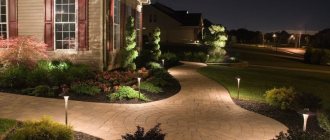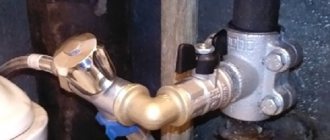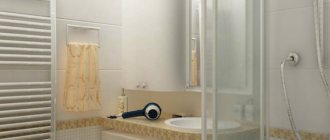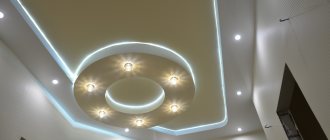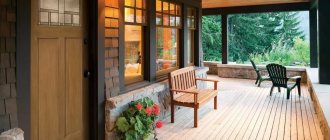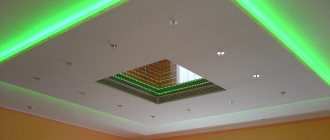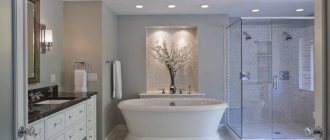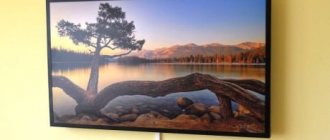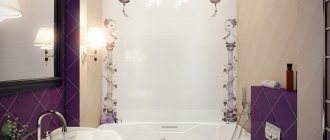Relationship between gazebo type and lighting system
Depending on the design features of the gazebo, the surrounding factors affecting the lighting system also differ significantly. These factors should be taken into account when organizing the system and choosing specific lighting fixtures.
Open
Open gazebo
In open-type gazebos, the weather conditions differ little from being outside, so all devices should be selected in the same dust resistance class as street lighting. Dust protection is indicated by the first number after the IP marking in the device passport, and the largest is 6.
Regarding the category of moisture protection, lamps should be selected depending on its position in relation to the canopy and open space. For example, located in the center of the gazebo, there is no need to protect it from direct moisture, and outdoor lighting is selected with the maximum degree of protection. Moisture protection is indicated by the second number after the IP marking and ranges from 0 to 8.
Closed
Closed gazebo
This gazebo is practically no different from a residential or utility room. Therefore, lighting is organized according to the same principle - the type of lamp does not have to be closed. The level of protection against dust and moisture IP can correspond to the change house. But more stringent requirements should be placed on the lighting source regarding work in low temperatures.
Outdoor
Outdoor gazebo
Designed to illuminate either the gazebo itself from the outside, or the space surrounding it, garden paths, roof, etc.
In this case, both functional lighting can be implemented by installing lanterns to ensure sufficient visibility in the garden, as well as decorative lighting to decorate a certain detail or space.
Backlight options
Depending on the purpose, all lighting in the gazebo is conventionally divided into general, local and decorative. To select luminaires for each type, use the principles below.
General
General lighting is designed to create a comfortable atmosphere in a certain area. In this case, this is the entire space inside the gazebo. The result should be soft, diffused lighting that is pleasing to the eye, allowing you to easily perform common tasks. The flow should be neither too strong nor too weak.
General lighting
According to their location, general lighting devices are installed directly on the ceiling above the illuminated space. If this is one lamp, it is installed in the center of the ceiling of a round gazebo at such a level that neither interior items nor visitors block the directed rays.
Local
In a gazebo, it is used to illuminate any area or place, designed to increase visibility in comparison with the flow produced by general lighting. Particularly relevant in places where you read or prepare food; local lighting should also be installed for lovers of needlework and homemade projects.
Local lighting
At the installation site, such lighting devices in the gazebo should be located directly above the desired area - table, chair, etc. To implement it, you can use both a portable floor lamp and stationary sconces, spotlights and other options.
Decorative
Decorative lighting
This type of lighting, both in the gazebo itself and outside it, can solve several problems:
- Provide decorative lighting for a specific area;
- Select the required areas or zones;
- Organize the decoration or design of areas or the entire gazebo.
Such lighting does not carry a functional load, so the power must be selected accordingly. LED spot or strip models are quite popular for these purposes; they are quite economical, so a group of light bulbs or a whole garland of them does not consume a lot of electricity.
But, it should be noted that decorations located within the free reach of a person must be installed in compliance with safety measures to prevent electric shock.
Spot lighting of the gazebo
One of the best solutions for a beautiful recreation area on a site is considered to be spot lighting. If the gazebo is not used for work processes, you should not place bulky structures, large lampshades and complex chandeliers under its roof.
It is important to remember the main task of such a place - to create a comfortable environment. Here you can relax, drink a glass of wine or have a confidential conversation
If there is too much light, the atmosphere can be destroyed.
Small or medium lanterns and lampshades are perfect for local lighting. A good choice would be carved metal lanterns, fabric lampshades, and custom glass solutions with holes. Such lighting fixtures provide a soft and unusual light, visually adding mystery and magic to your garden.
We have a few tricks in stock that will help make the gazebo a truly fabulous place that can delight your friends and family:
hang large lampshades of the same type on the sides of the gazebo (or in the corners) (it is important that they do not give off too bright light); in the central part under the ceiling, install several very small light bulbs (you can even just hang dim incandescent lamps on a long cord); Separately illuminate the area in front of the gazebo with ground-based light sources, for example, energy-saving white lanterns that are recharged from sunlight.
Choosing lamps for the gazebo
The next parameter you should decide on is the type of lighting equipment. Depending on the design features of the lighting devices, the light they produce, light transmission parameters, space coverage, etc. will differ.
Suspension
Hanging lamp
Structurally, such a lighting device in the gazebo is represented by classic pendant chandeliers.
The lamp consists of a lampshade and a pendant structure; it is attached to the ceiling on a rigid or flexible base:
- cord;
- chain;
- pipe
- frame.
It may consist of one or several units, depending on the area of the gazebo and the light output of each device. If pendant lanterns are used for general lighting of a room, they should provide a diffuse flow; models with an opaque shade or diffused glass are selected here. For directional lighting in the gazebo, devices with reflectors are used to enhance the flow.
The height of the pendant lights will determine the area of effective lighting, so it is chosen based on practical considerations directly on site.
LED bulbs
LED lamp
LED lamps are the most effective way to illuminate garden gazebos today. They produce the most powerful luminous flux compared to incandescent or fluorescent lamps and consume a minimum of electricity.
Thanks to this, the heating from the lighting devices is minimal, the lamp itself heats up to no more than 50ºC, and therefore the dimensions of the device are minimal. The most common option is soffits, although an LED light bulb can also be screwed into a classic chandelier.
To install compact spotlights, holes are cut in any structural or decorative element, the main thing is that it is strong enough for such installation. In addition to lamps, LED strips are also used to illuminate gazebos, but their task is to provide decorative lighting.
Hidden backlight
A feature of this type of lighting is the removal of the light source itself from the field of visibility. The result is an interesting decorative effect that highlights the illuminated surface. The light does not bring any benefit to the surrounding space of the gazebo or the territory of a suburban area. Since hidden lighting is of auxiliary importance, low-power lamps and equipment are used for it.
Hidden backlight
A striking example is the same ceiling lighting, which is installed behind a beam or a special cornice. They can be installed either along the perimeter of the ceiling or in any other order.
Wall sconces
Sconces for lighting
Wall lamps are designed for vertical installation on a supporting structure. They can be used both for general lighting in the gazebo and for local lighting.
In large-area gazebos, to provide general lighting, wall sconces are installed on opposite walls to cover the entire space. The disadvantage of such lighting devices is the direction of lighting, since any objects or visitors can become a barrier to the light.
Solar Lanterns
Solar-powered lanterns
Such devices are used as street lamps, since the accumulation of electrical energy comes from the sun and the galvanic cell must be located in an open space.
The scope of solar-powered street lamps is quite wide - they are used to illuminate paths, to decorate the area, and to illuminate the veranda. Their disadvantages include the low level of light output in cloudy weather.
Types of lighting for different areas
First of all, you need to decide what type of lighting you need - to have more light, to be beautiful, or both?
- Is a hanging light bulb over the center of the indoor table enough for you, or do you want something more interesting?
- Are you ready to tackle decorative lighting wiring?
- Is it necessary to light the path to the gazebo? Is it possible to hang a lantern at the dacha that will illuminate the entire recreation area?
A combination of lamps, solar lanterns, candles and a table lamp.
Answering these questions will help you choose the best option for yourself.
Below are the lighting areas you should pay attention to:
Indoors
The recreation area itself - the space inside the gazebo, the table, benches and chairs should be illuminated 100% of the time. Your holiday doesn't have to end when it gets dark. Therefore, first you need to install at least a banal light bulb that will fully cope with its task.
An alternative to a light bulb can be more beautiful and high-quality light from a chandelier, lanterns or LED lamps. Installing one of the proposed options will completely solve the problem with light in the gazebo.
If you want to add decorative lighting elements, then interior ceiling lighting and wall sconces will help you with this (they will be discussed later). They all work best in tandem with the main light. To create a romantic atmosphere and comfort, it can be turned off.
The area near the gazebo
Very often this point is missed, although it is also extremely important for a comfortable rest. The space around the gazebo, which can be a porch or a path, can be illuminated in several ways:
- Installing a lamp in the country house or on the gazebo, which will illuminate the entire territory of the summer cottage.
- Installation of lights near the path that will highlight sections of the path. Even solar-powered street lights can help here. In most cases, they are sufficient for comfortable movement of people on the site.
Decorative lighting
This category includes all artificial light that is used exclusively as a decorative element. It is not enough to create a bright room or space, but it is enough to create a beautiful color effect.
One option is to illuminate the perimeter of the gazebo from below (photo below). An interesting effect is created that will undoubtedly impress guests.
Examples of connection diagrams
Based on the number of wires used, lighting circuits can be divided into two-wire and three-wire. The first option provides for the presence of only neutral and phase wires, and the second also has protective grounding. The three-wire system is the safest because it removes the potential from grounded metal structures in the event of an insulation breakdown.
In addition, the connection method differs in the presence or absence of protection for the lighting system. If the meter is equipped with a built-in automatic machine, many users rely only on it and connect street chandeliers and other electrical equipment in the gazebo directly from the meter.
Two-wire lighting circuit
The figure above shows the simplest option for organizing power supply to equipment in the gazebo - using a two-wire circuit without protection devices. Many ordinary people use it because of the lack of a PE conductor in the power supply network and the reluctance to organize their own ground loop.
Its implementation will require a minimum of capital investments, but the security level of this scheme leaves much to be desired. In the event of a breakdown on the body of an electric kettle or fireplace, people nearby may be exposed to dangerous potential.
Power supply via a three-wire system with RCD
This figure shows a three-wire power supply system for a gazebo. In both options, the principle of powering lighting is considered in conjunction with connecting sockets. This is the safest option when all consumers are sectioned off from different machines, and an RCD is provided in the system to protect against leakage. Of course, you can modernize this scheme - install one machine for the entire gazebo or combine lighting under one input.
Another option to improve the safety of your lighting system is to include low-voltage spotlights.
Power supply circuit for spotlights
In this case, the LED sources are powered by a step-down transformer, which supplies them with 12V. And this level of voltage is absolutely safe for humans, even in the event of a breakdown on the housing.
Useful tips
When you have already decided on the necessary lighting fixtures in the gazebo, you can proceed directly to the installation work.
Your case will have its own specific features, but we will give general tips that will help make the lighting better:
- In wooden gazebos there is a high risk of fire, so the lamps should be installed on a non-flammable base, and all wiring should be mounted in a metal corrugation or box.
Lighting in a wooden gazebo
The same applies to wooden structures or wooden chandeliers in gazebos made of other materials.
- For gazebos made of concrete or metal, it is quite acceptable to lay the wiring in a plastic box or corrugation.
- It is better to install a switch for switching light bulbs at the entrance to the gazebo. Also pay attention to the sectioning of lighting devices by zones or types; for each of them it is advisable to install its own switch or one multi-key switch.
- When installing lighting fixtures, check where the light flow is directed - there is no point in illuminating an outdoor space with a lamp above a table or near a fireplace.
- The ceiling lamp can be made movable to adjust its height. This way they will be able to provide both general and local illumination.
- To produce multi-colored lighting, you can install an RGB diode strip.
- Be sure to purchase original lamps, as cheap Chinese models often break and cause short circuits with subsequent fire.
How to make a lamp yourself?
The interior decoration of a gazebo often involves design solutions designed to provide coziness and comfort and create a relaxing atmosphere. Hand-made crafts are well suited for such an interior, and since houses are often made of wood, a do-it-yourself gazebo lamp can be made from wood.
Ball lamp made of branches
In order to make an original ball lamp, you will need:
- several thin dry twigs 10-12 cm long;
- inflatable beach ball;
- cling film;
- glue.
Manufacturing stages
- The beach ball needs to be inflated and wrapped in cling film.
- Branches in the form of a mesh are glued onto the film using glue. Make sure they touch each other in several places. Leave a small space at the top through which you can remove the beach ball and place the light bulb inside.
- After all the branches are glued, the ball is deflated and pulled out along with the film.
- A light bulb is placed inside and secured with wire to the side branches.
- The lamp is connected to the wiring, and a ball chandelier is hung above the ceiling.
